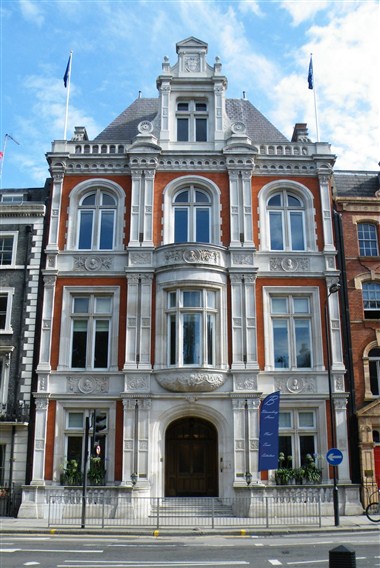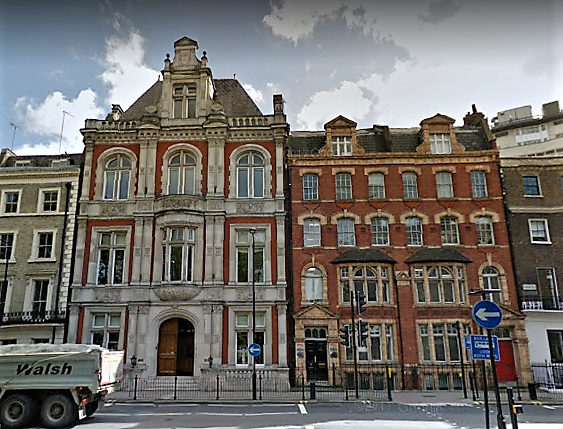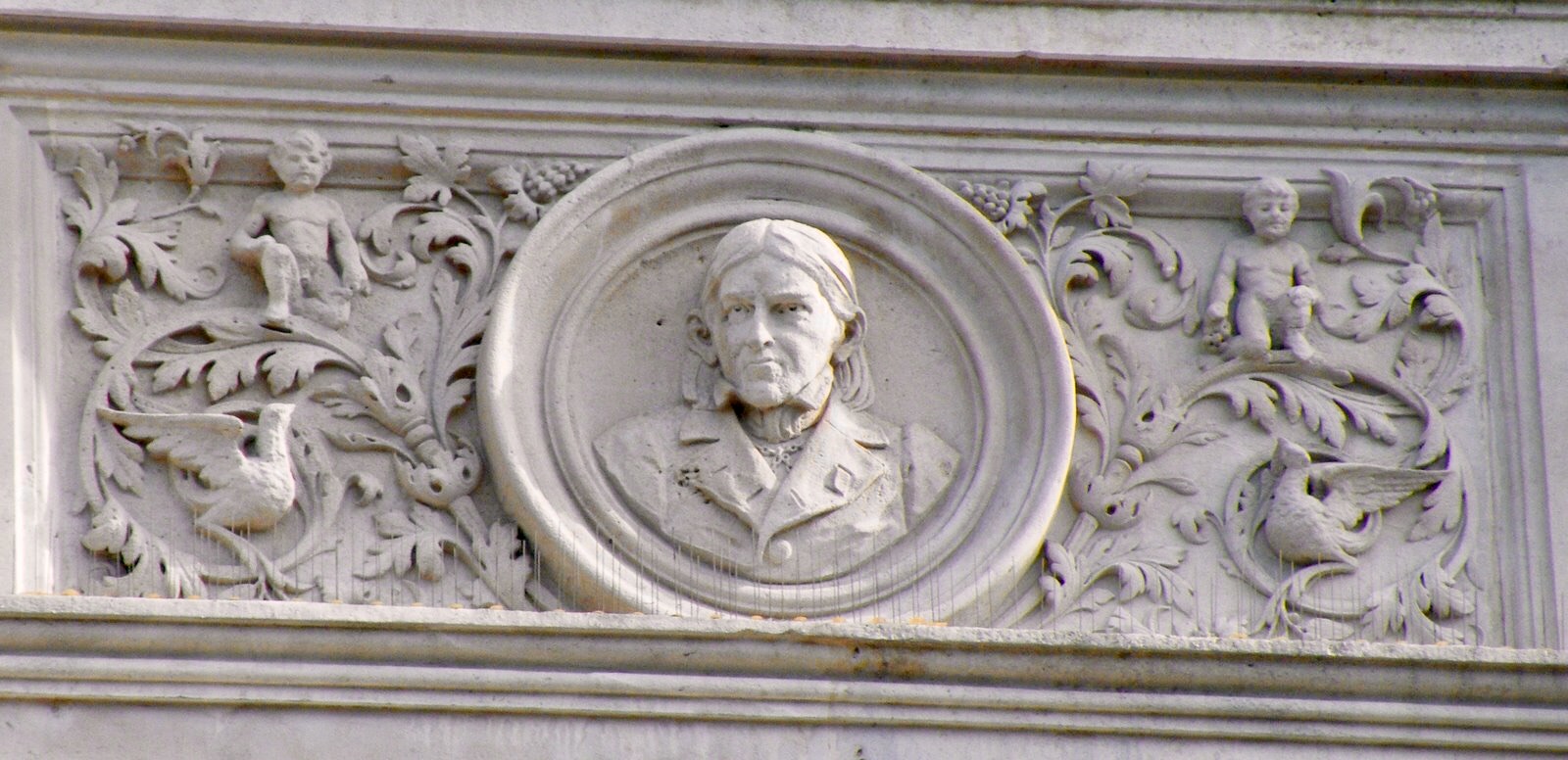For 131 years, from his lofty vantage point, Froebel has gazed down on the everyday comings and goings of Bloomsbury Square in Central London, overlooking Bloomsbury Square Gardens and the British Museum beyond. This relief bust of Froebel (or 'roundel') adorns the façade of the building now known as Bloomsbury House, located at 2-3 Bloomsbury Square London WC1. However, it was built in 1887 by the College of Preceptors, as its headquarters where it remained throughout the 20th Century. Founded in 1846 as the Society of Teachers, its aim was to create and maintain professional standards in the teaching profession which by the mid-19th century had a poor reputation. Incorporated by Royal Charter in 1849, it became the College of Preceptors (later the College of Teachers) and was the first professional body for teachers, pioneering formal training for the profession.
From its inception the College embraced the importance of early years education, one of its founding pioneers, Professor Joseph Payne became a strong Froebelian influence within the College. Payne subscribed to the view that the best teachers should be ‘rewarded’ by being assigned to the youngest children. In 1870 he gave a lecture at the College entitled ‘Froebel and the Kindergarten System of Education’ and, in 1874, members of the College met together and founded the ‘Froebel Society for the Promotion of the Kindergarten System’. Beata Doreck, who had become the first female Fellow of the Chartered College earlier that year, was elected the Society’s first president.
For the next 25 years, the Froebel Society and the College of Preceptors worked closely together, not only in sharing their membership, in their aspirations for well-trained and professional teachers for all children, but also in the use of facilities, Froebel Society meetings often taking place in the College’s training rooms, initially at 42 Queen’s Square, and from 1887 at its new purpose-built premises at 2-3 Bloomsbury Square. It was natural therefore that when the adjacent premises at 4 Bloomsbury Square, became vacant in 1896, that the Froebel Society should move in, making them the Society’s headquarters and Registry for Kindergarten Teachers for the first three decades of the 20th Century. How fitting that Froebel’s ‘roundel’, installed some 10 years earlier on the façade of the College of Preceptors, literally overlooked the front door of the first headquarters of the Froebel Society in the United Kingdom.
The Froebel roundel is one of five that were installed to adorn the front façade of the College, on the first and second floors, under the windows, each carrying a relief bust of an eminent progressive thinker. Along with Froebel there are Johann Pestalozzi, John Locke, Thomas Arnold and John Milton. Although the College moved out in 2003, the building was restored in 2007 and became a conference venue, the roundels’ maintained and the educational connection of the building incorporated into the names of their conference and training rooms, including one aptly named ‘The Froebel Room’.

Bloomsbury House, Bloomsbury Square, London, WC1
Froebel's roundel is top-right below the second floor window.

The former College of Preceptors and the adjacent red brick premises which served as the headquarters of the Froebel Society, the National Froebel Union and the Registry of Kindergarten Teachers from 1896 to 1935.
